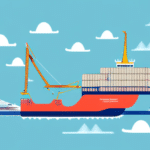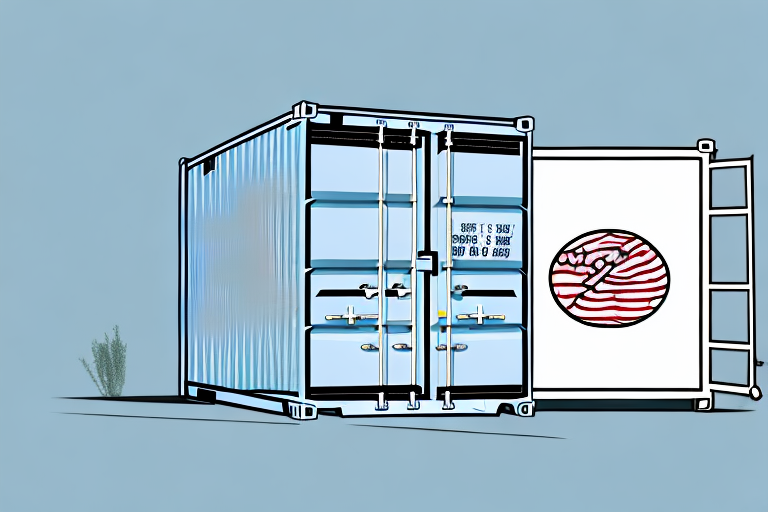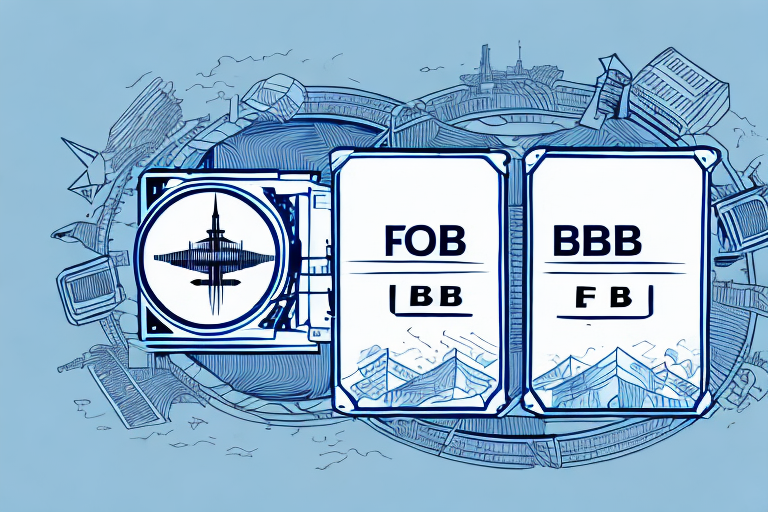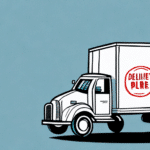What is FOB Destination and How Does it Impact Shipping?
FOB destination is a shipping term used in logistics to determine the point at which ownership and responsibility for goods transfers from the seller to the buyer. In this article, we will explore what FOB destination is and how it impacts shipping processes for businesses around the world.
Understanding FOB Destination: Definition and Explanation
FOB destination is a term that determines the point at which ownership and responsibility for goods transfer from the seller to the buyer. It refers to the point at which the seller either delivers goods to the buyer's specified location or transfers ownership of those goods to the buyer while still in transit. Under FOB destination terms, the seller bears the costs and risks associated with shipping the goods until they reach the buyer's specified location.
It is important to note that FOB destination is different from FOB shipping point, which refers to the point at which ownership and responsibility for goods transfer from the seller to the buyer when the goods are loaded onto a carrier for shipment. FOB destination is often preferred by buyers as it provides them with more control over the shipping process and reduces the risk of damage or loss during transit. However, it may also result in higher shipping costs for the seller, as they are responsible for the goods until they reach the buyer's specified location.
Key Differences between FOB Origin and FOB Destination
FOB origin and FOB destination are two common shipping terms used in logistics. The main difference between these two terms lies in who bears the costs and risks associated with shipping the goods. Under FOB origin terms, the buyer assumes responsibility for the goods and the costs associated with shipping them as soon as they are loaded onto a shipping vessel. In contrast, under FOB destination terms, the seller bears the costs and risks associated with shipping the goods until they reach the buyer's specified location.
Another key difference is the point at which the title of the goods transfers from the seller to the buyer. With FOB origin, the title transfers to the buyer as soon as the goods are loaded onto the shipping vessel, while with FOB destination, the title transfers to the buyer once the goods have been delivered to the specified location.
The choice between FOB origin and FOB destination can have significant implications for both the buyer and the seller. For example, if the buyer chooses FOB origin, they will have more control over the shipping process and may be able to negotiate better rates with carriers. On the other hand, if the seller chooses FOB destination, they will have more responsibility for the goods during transit and may need to purchase additional insurance to protect against loss or damage.
Advantages and Disadvantages of FOB Destination Shipping
Advantages:
- Buyer Control: Buyers can specify exactly where the goods need to be delivered, ensuring control over the final delivery point.
- Cost Management: Buyers do not bear the shipping costs until the goods arrive at their location, potentially reducing upfront expenses.
Disadvantages:
- Higher Costs for Sellers: Sellers are responsible for shipping arrangements, which can increase their costs.
- Risk of Damage or Loss: Sellers bear the risk of damage or loss during transit, which may require additional insurance.
- Longer Delivery Times: Coordinating with multiple carriers can lead to longer delivery times.
- Complex Management: Requires close coordination between buyer and seller, increasing management complexity.
How FOB Destination Affects Cost of Goods Sold
FOB destination can significantly impact the Cost of Goods Sold (COGS) for businesses. Under FOB destination terms, the seller must include all shipping costs associated with delivering the goods to the buyer's specified location in the COGS. This includes costs such as packing, insurance, and freight charges.
Businesses should carefully consider FOB destination terms when negotiating contracts with suppliers or buyers. Choosing the wrong terms can lead to unexpected costs and impact profitability. Additionally, businesses must understand the shipping and delivery process clearly to avoid misunderstandings or disputes.
According to a 2023 report by ShipScience, businesses that effectively manage FOB terms can reduce shipping costs by up to 15%, highlighting the importance of strategic term selection.
The Role of FOB Destination in Freight Transportation Contracts
Freight transportation contracts are complex, involving multiple parties and variables. FOB destination is a crucial aspect to consider when negotiating these contracts, as it determines who is responsible for the goods during transit. Buyers and sellers must agree on the contract terms before shipment, as discrepancies can lead to unnecessary costs and delays.
FOB destination signifies that the seller is responsible for the goods until they reach the agreed-upon destination. Once the goods arrive, the buyer assumes responsibility. This affects the risk and cost associated with transportation.
Other terms that can be included in freight transportation contracts include FOB origin, CIF (Cost, Insurance, and Freight), and EXW (Ex Works). Each term has unique implications, and understanding the differences is essential for effective contract negotiation. Collaborating with an experienced freight forwarder or logistics provider, such as ShipScience, can help clarify contract terms and ensure smooth transportation of goods.
Tips for Negotiating FOB Destination Shipping Terms with Suppliers
- Clear Specifications: Clearly specify the exact delivery location and any special requirements to ensure the seller understands expectations.
- Cost Negotiation: Negotiate shipping prices and ensure that any additional costs are included in the total cost of goods.
- Mode of Transportation: Discuss the most efficient and cost-effective mode of transportation, whether it be air freight, sea freight, or road transportation.
- Establish Timelines: Set clear delivery timelines and consider including penalty clauses for late deliveries to ensure compliance.
Common Challenges with FOB Destination Shipping and How to Overcome Them
Timely Delivery: Ensuring goods are delivered on time and in good condition can be challenging. To overcome this, buyers should collaborate closely with suppliers to make shipping arrangements in advance and address potential issues before shipment.
Risk of Damage or Loss: The risk of damage or loss during transit is inherent in FOB destination shipping. Mitigate this risk by purchasing insurance for shipments, providing financial protection in case of damage or loss.
Customs Regulations: Navigating customs regulations and requirements in the destination country can be complex. Buyers should research these regulations and work with suppliers to ensure all necessary documentation is provided and that goods are properly labeled and packaged. Resources like ShipScience's Customs Guide can be invaluable.
Best Practices for Managing FOB Destination Shipping Processes
- Comprehensive Planning: Understand shipping requirements thoroughly and ensure all parties are aware of their responsibilities.
- Effective Communication: Maintain open lines of communication with suppliers to manage the shipping process efficiently.
- Contingency Planning: Develop backup plans for unforeseen circumstances, such as alternative shipping options or backup suppliers.
- Regular Review: Continuously assess and evaluate shipping processes to identify improvement areas and optimize operations.
How to Track and Manage FOB Destination Shipments
Tracking and managing FOB destination shipments involves coordinating with multiple parties and monitoring the movement of goods throughout the shipping process. Here are key steps to effectively manage these shipments:
- Access Tracking Information: Work with suppliers to obtain necessary tracking details and stay informed about shipment status.
- Documentation Management: Ensure all required documents, such as bills of lading and customs declarations, are correctly prepared and submitted on time.
- Proper Packaging and Labeling: Verify that goods are properly packaged and labeled to prevent damage and ensure correct delivery destinations.
Using logistics platforms like ShipScience's Tracking Tools can streamline the management of FOB destination shipments.
The Future of FOB Destination Shipping in the Global Logistics Industry
FOB destination shipping is expected to remain a significant component of the global logistics industry, especially as businesses expand their international operations. However, advancements in technology and shifting trade policies may influence how FOB destination shipping is managed in the future.
Emerging technologies such as blockchain for enhanced transparency, artificial intelligence for predictive analytics, and IoT devices for real-time tracking are poised to revolutionize FOB destination shipping. Additionally, changes in international trade agreements and sustainability initiatives may require businesses to adapt their shipping strategies.
In conclusion, FOB destination is a shipping term with substantial implications for businesses involved in international trade. By understanding FOB destination and its impact on shipping processes, businesses can make informed decisions, optimize their logistics operations, and ensure timely and safe delivery of goods.




















